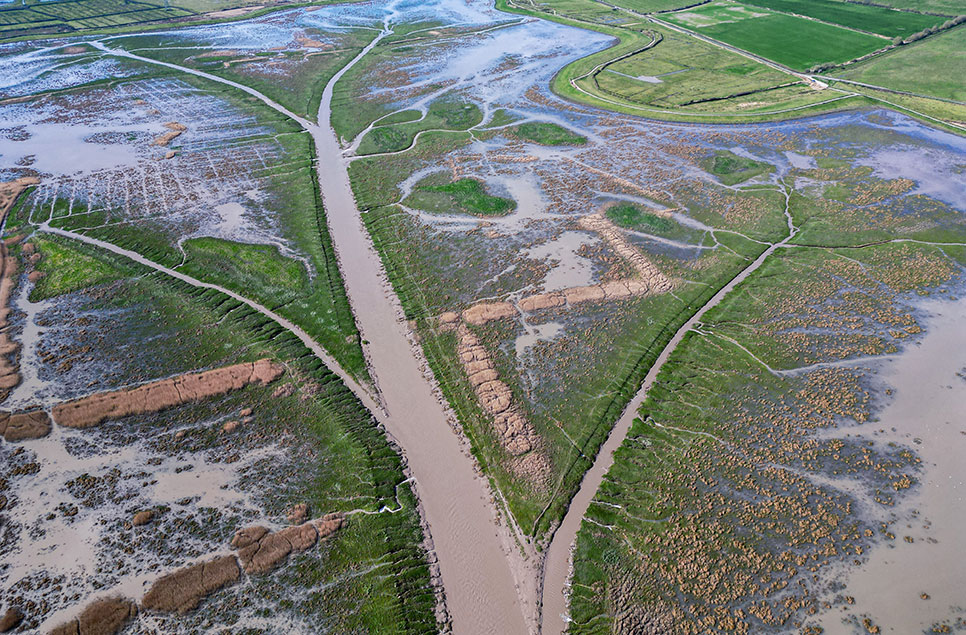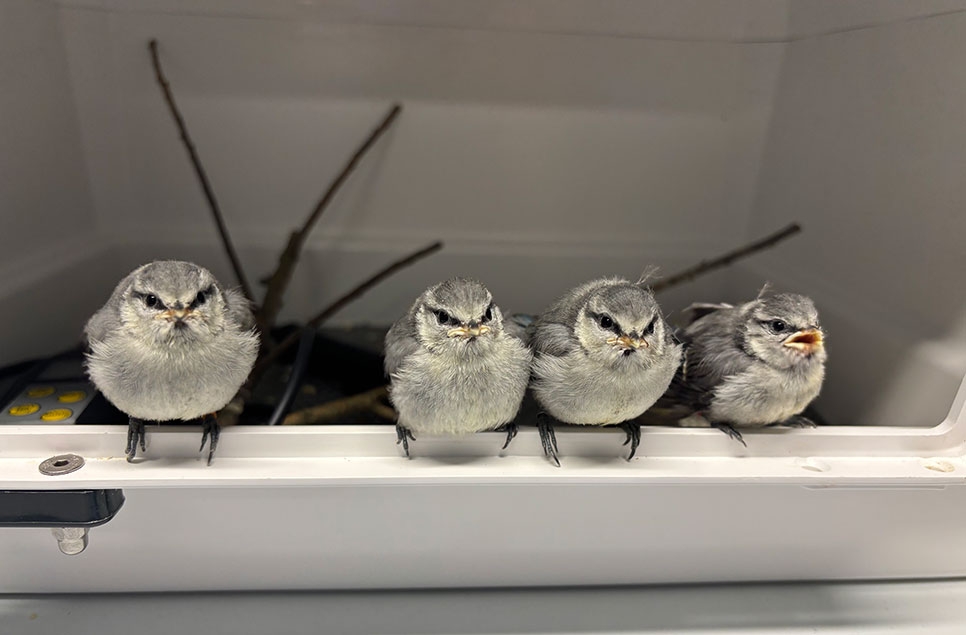WWT Snapshot Jan-Mar 2018
Thank you to almost a million of you who visited WWT's nine wetland centres in the 12 months to April 2018.
You are supporting huge amounts of conservation work around the world. Here's just a sample of what you've helped to achieve in the last three months - including a visit from the PM Theresa May, and an expedition to wild Madagascar:
Around the world
In Dubai, we taught conservationists how to catch flocks of birds by firing nets over the city's first internationally protected wetland. We also showed them how to ring, measure and check the weight and health of the birds they catch.
In Bangladesh, ‘headstarted’ Critically Endangered spoon-billed sandpipers that we reared and released in Russia have been spotted for the first time on migration. That means that wonderfully our headstarters have now been seen in all eight countries along its flyway (Russia, China, South Korea, Japan, Taiwan (ROC), Thailand, Myanmar and Bangladesh). They’re doing well!
In Madagascar:
- We’ve surveyed the state of the wetlands and wildlife of the Ambonara region. Amazingly we spotted the only flock of 250 white-backed duck in the country, as well as the largest ever seen flock of Madagascar grebe (600 – of about 5,000 that exist all told). The wetland is in good condition compared to neighbouring wetlands due to a lack of local fishing and rice farming.
- We co-hosted an event in the capital Antananarivo to build capacity for the conservation and sustainable use of the country’s wetlands, which are home to some of the world’s rarest animals. This has resulted in the country’s first National Wetland Guidance Manual.
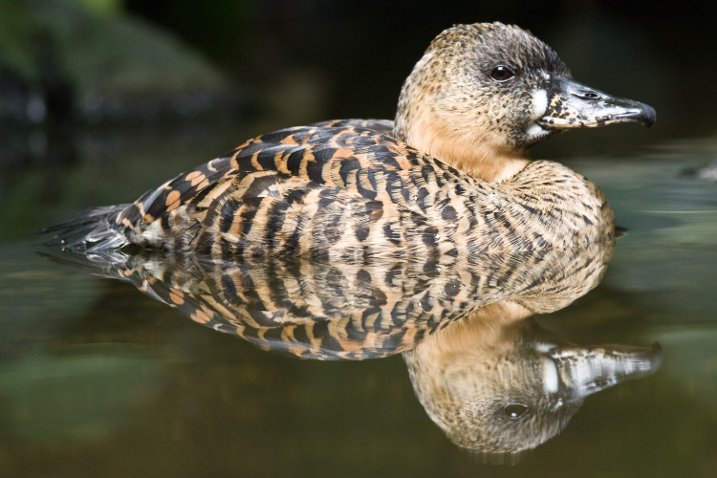
In Poland, coverage of our Flight of the Swans expedition in 2016 has led to good relations being built with hunters. They have now led the way to a first ever change in Polish law to restrict hunting in locations that are important to struggling species like the Bewick’s swan.
In China:
- We’re encouraging wetland parks to form a representative group to share good practice, similar to that co-ordinated internationally at WWT HQ. We spoke to several parks at a meeting at Shenzhen, the area that links Hong Kong to China’s mainland. We’re currently advising on wetland management at several wetland parks in the area (including at Futian, Sichuan Xinjin and Xiazhu Lake).
- We co-hosted a conference in the urban Yangtze River Delta that brought the government, academics and NGOs together to produce guidance on integrating wetlands and city development.
- We met with conservationists from the 10 countries where Baer’s pochard can be found. The meeting resulted in a resolution calling for their governments to take action to save this duck from extinction. Less than 1,000 survive. WWT has led in preparing an action plan for the species’ survival.
In Sri Lanka, our CEO Martin Spray was part of a meeting of Ramsar, the world wetland conservation convention, to draw up draft resolutions for its meeting of parties in Dubai in October. Our Director of WWT Consulting was also in the country to join a local community to celebrate World Wetlands Day in Colombo, where we’ve helped to restore the city’s wetlands for the benefit of local communities and wildlife.
In Denmark, we joined international scientists to compare how computer modelling, based on past monitoring, could show how barnacle geese populations in Scotland might be affected by plans for controlled culling.
In Lithuania, we presented a series of talks and workshops on our research into how pink-footed geese interact with windfarms in the UK and red-breasted geese interact with windfarms in Bulgaria.
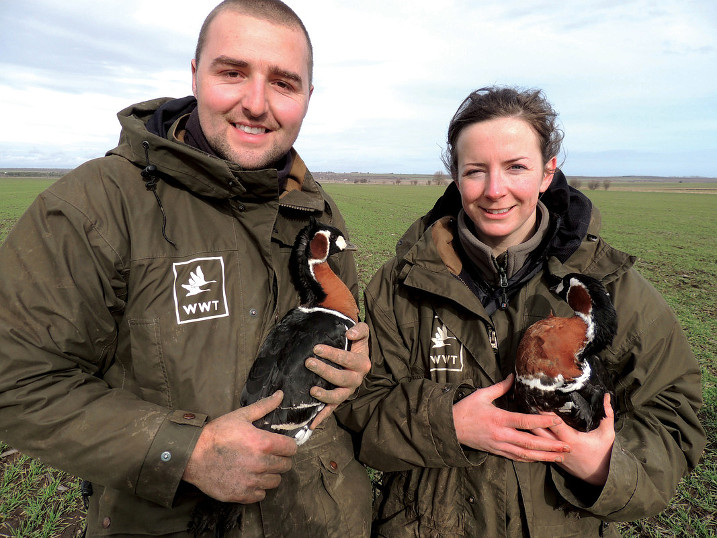
In the Russian arctic we organised a workshop for conservationists and researchers to plan activities to reduce the illegal hunting of Bewick’s swans. A WWT research paper is in preparation which will show hunters are unfortunately often misidentifying protected species.
In Kenya, we provided research support for governments negotiating a resolution on health and the environment, at the UN Environment Assembly. The resolution encourages international efforts to reduce poisoning caused by lead-based ammunition in hunting. As part of the Assembly, the UN set the direction for reducing plastics in oceans. With help from Blue Planet II shortly afterwards, this has kick-started a global effort to reduce single-use plastic consumption.
Around the UK
In Surrey, we’re working closely with the Environment Agency on plans for a flood relief scheme for the River Thames, including potential for new wetlands near the Thorpe Park Leisure Resort.
In Tayside, we’ve installed a series of weirs primed with monitoring equipment as part of a project with University College London looking at the impact of introduced beavers on rivers.
In Somerset:
- A flock of 25 cranes was the largest seen this winter. 12 were positively identified as having been reared and released by WWT at Slimbridge in previous years, with a further 8 spotted back at Slimbridge. Of the four wild fledglings from 2017, three are being seen regularly with their parents but there is no sign of the fourth.
- We began work to collect data on biodiversity, water quality, habitats and water flows ahead of work on a new flood relief scheme at Williton. This will help to compare the condition of the local river catchment before and after the scheme is built.
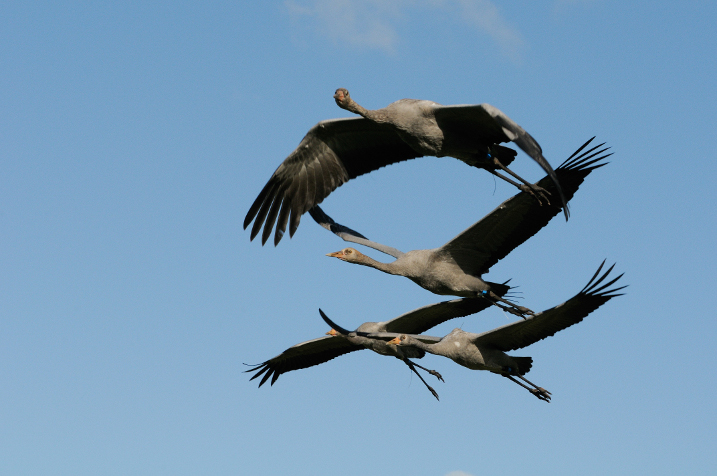
At Slamannan, midway between Edinburgh and Glasgow, satellite tags on two taiga bean geese helped to show where this species is feeding and roosting in local wetlands. The birds have now left for Denmark, but sadly not before an illegal shooting incident. Police are investigating.
In the Inner Hebrides islands, we caught nearly 200 Greenland barnacle geese in order to measure their condition and ring them. This is part of fieldwork to understand how controlled culling is affecting this endemic population.
In Cardiff, we’re helping the Welsh Government to introduce a new sustainable drainage law by drafting new guidelines for them. The guidelines will help developers design drainage systems that will improve water quality, flood resilience and biodiversity.
In Enfield, we built a new sustainable drainage system which will clean and store water at Prince of Wales Primary School and Children’s Centre. 200 children have joined in so far with learning activities based around the rain garden.
In Slough, several hundred schoolchildren from five schools joined in a day of conservation on World Wetlands Day in February. Alongside them our dedicated volunteer group built a bridge, redesigned the stream channel, cleared back trees and shrubs and cleaned up litter. Well done all!
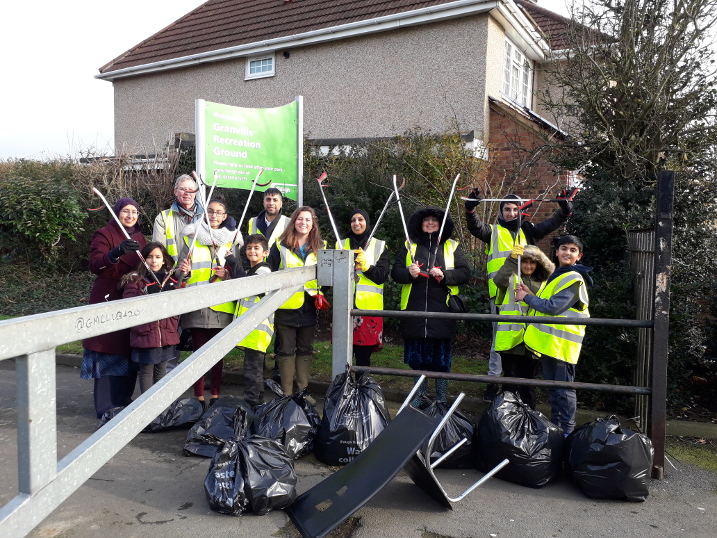
In Salford, our design for the Environment Agency’s new £10m flood relief wetland was completed. The 5 hectare urban wetland will help to protect nearly 2,000 homes and businesses from flooding. The wetland will open to the public in the spring.
At Westminster:
- We successfully lobbied for a change in the National Planning Policy Framework (NPPF) to benefit water quality and wildlife. Developers will now need to explore how sustainable drainage could be fitted to new-builds, which includes using natural features to manage rainwater run-off rather than underground pipes.
- We've drafted a number of amendments which formed parts of debates in the EU Withdrawal Bill. Along with NGO partners we are pushing for European environmental protections to be retained post-Brexit and we’ve been cited directly in debates in both the Commons and the Lords.
At our wetland centres
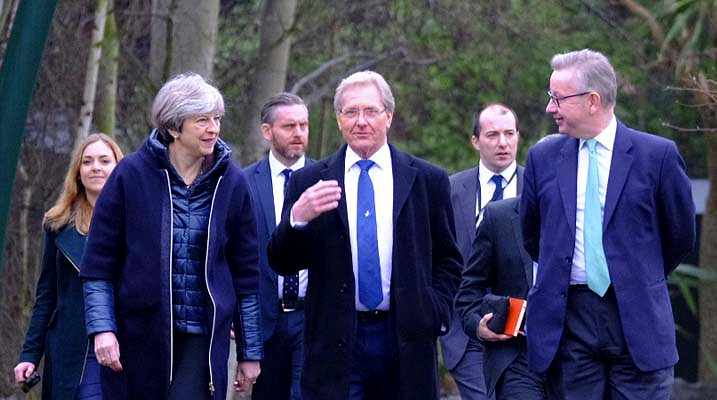
At London, the Prime Minister Theresa May and Environment Secretary Michael Gove chose our wetland centre to launch the Government’s long awaited 25 Year Environment Plan. They discussed the plan with WWT’s policy team while birdwatching in one of our hides.
At Washington, we helped pensioner Tommy Hagan to tick off one of his bucket list dreams – to meet some black swans. Working with mental health charity Mind Mosaic, Tommy’s bucket list is part of therapy to put an abused childhood behind him. We’ve now named our pair of black swans after Tommy and his wife Gloria.
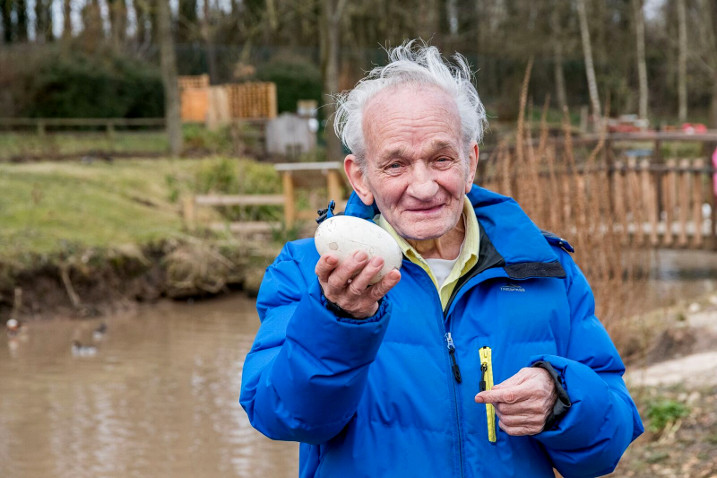
At Martin Mere, we've got planning permission for a new pond dipping area. This will be fed by rainwater channelled from the roofs of the restaurant and a new pagoda which will shelter visiting school parties as they learn about aquatic minibeasts.
At Slimbridge:
- We’re trialling the creation of a new ‘mobile’ release pen that could be used to rear and release young black-tailed godwits to boost their breeding numbers in Britain. Our overall black-tailed godwit project is going well, with a progress report delivered to EU in January and eight of the birds we reared and released at Welney in 2017 being spotted in Portugal in February.
- Planning permission was granted for a range of new developments to be completed by 2020. The tropical house has been demolished and new tracks and paths are in place to enable construction of a huge new wetland aviary exhibit. We’re also finalising our designs for a new tower hide next to the Severn Estuary, to replace the aging Holding Tower.
- We produced a publicly accessible report for wildfowlers on how their surveillance and has helped map the concerning spread of sarcocystis ‘rice-breast’ infection in wild ducks in the UK.
At Llanelli, we’ve created a new pond area next to the main entrance. We’re planting it up in spring and it will be fed by rainwater running off the visitor centre roof.
